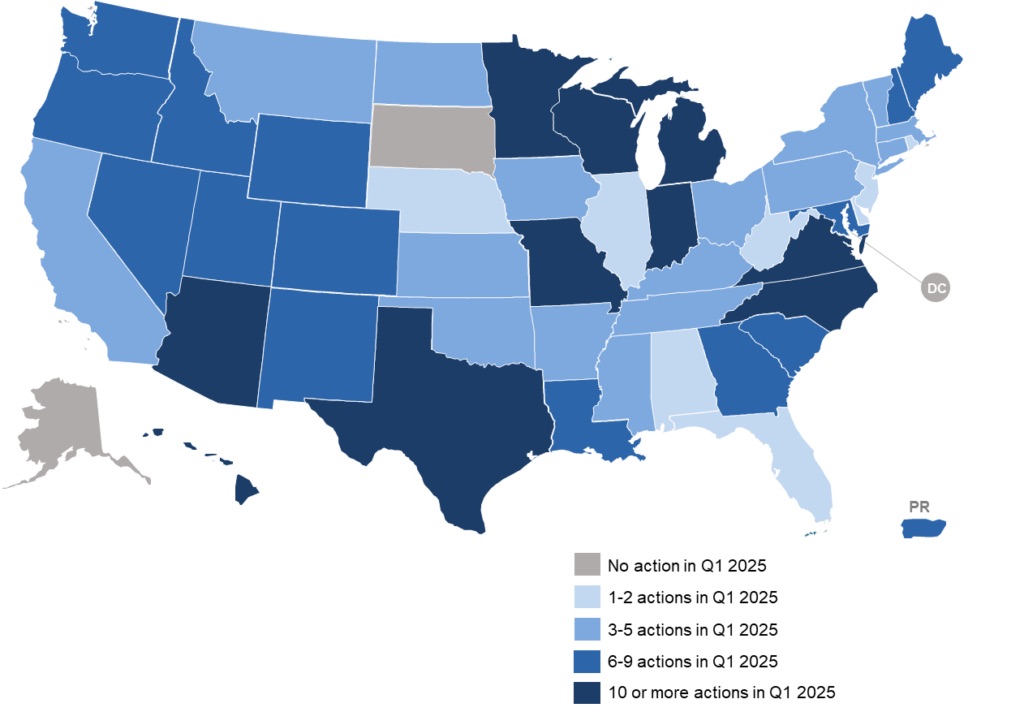50 States of Power Decarbonization Q1 2025: Utilities Plan for New Data Centers and Large Load Customers
The NC Clean Energy Technology Center (NCCETC) released its Q1 2025 edition of the 50 States of Power Decarbonization. The quarterly series provides updates on state and utility actions pertaining to clean energy targets, emission reduction targets and carbon policies, generation planning and procurement rules, integrated resource plans, and electric generation capacity changes (RFPs, green tariffs, power plant retirements, etc.). New this quarter is the addition of a section on actions pertaining to data centers and other large load customers, including resource procurement, interconnection, and tariff development for new large load customers.
The Q1 2025 report finds that 48 states, as well as Puerto Rico, took a total of 293 actions related to electric power decarbonization and resource planning during the quarter (see figure below), in addition to 429 introduced bills that had not yet passed a legislative chamber as of the end of March. Note that beginning this quarter, action counts include only regulatory activities and legislation that has passed at least one chamber, with all introduced bills available in an appendix to the report.
Among integrated resource plans recently filed or under review by regulators in Q1 2025, planned capacity additions totaled 92,592 MW for natural gas, 88,858 MW for solar, 49,367 MW for wind, and 34,861 MW for storage, while planned coal retirements totaled 41,921 MW.
2025 Action on Power Decarbonization and Resource Planning

The report discusses three trends in power decarbonization actions taken in Q1 2025: (1) policymakers seeking repeals of energy and emission targets; (2) utilities proposing tariffs for data centers and other large customers; and (3) legislators and utilities pursuing development of new natural gas capacity.
“This is the first quarter since we began this report in 2023 that natural gas generation has led planned capacity additions in utility IRPs,” observed Autumn Proudlove, Managing Director – Policy & Markets at NCCETC. “This comes as we see utilities revising their load forecasts in response to expected data center and other large customer load growth.”
The report notes the top five policy developments of Q1 2025 were:
- Indiana and Nevada regulators approving data center tariffs;
- Georgia Power filing its 2025 Integrated Resource Plan;
- The Governor of Hawaii signing an executive order for county-level decarbonization;
- Missouri lawmakers establishing statutory resource planning requirements; and
- The Maine Governor’s Energy Office releasing the Maine Energy Plan and an associated technical report.
“Following last year’s surge in projected data center demand, utilities are responding with updated or entirely new large load tariffs,” noted Justin Lindemann, Senior Policy Analyst at NCCETC. “These efforts aim to address the digital elephant in the room by adopting innovative contractual terms that support clean energy development, enhance grid reliability, and protect other customer classes from cost shifting.”
NC Clean Energy Technology Center | http://www.nccleantech.ncsu.edu








